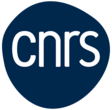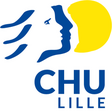Softwares
miRkwood is a software package for the discovery of microRNAs and their hairpin precursors in plant genomes. It combines multiple evidences to support the prediction: thermodynamical stability, conservation, miRNA:miRNA* duplex,... miRkwood has a user-friendly interface to navigate in the data, as well as many export options to conduct further analyses. Go to the miRkwood website.
Publication: Guigon, I., Legrand, S., Berthelot, J. F., Bini, S., Lanselle, D., Benmounah, M., & Touzet, H. (2019). miRkwood: a tool for the reliable identification of microRNAs in plant genomes. BMC genomics, 20(1), 532. https://doi.org/10.1186/s12864-019-5913-9
MATAM is a pipeline to assemble full-length marker genes from metagenomic and metatranscriptomic data. It was validated on the 16S rRNA gene and Illumina data, and can perform out-of-the-box assemblies using the provided default reference database. Go to the MATAM website.
Publication: Pericard, P., Dufresne, Y., Couderc, L., Blanquart, S., & Touzet, H. (2018). MATAM: reconstruction of phylogenetic marker genes from short sequencing reads in metagenomes. Bioinformatics (Oxford, England), 34(4), 585–591. https://doi.org/10.1093/bioinformatics/btx644
Multi-omics data analysis is one of the main challenges currently faced by integrative biology. Solving it requires combining competences from multiple domains like statistical analysis, computer science and experimental biology. Several types of analytical approaches have been proposed over the past few years in order to perform integrative biology, among them a lot of work around networks (inference or visualization) and more recently around multi-block analyses. The mixOmics package implements multiple statistical analysis methods to integrate different types of omics data (e.g. transcriptomics, metabolomics, proteomics). We focus here on selecting variables in the context of discriminant analysis, where various blocks (each block corresponding to one type of omics) are provided as input.
We built upon the existing mixOmics block.splsda function, which performs feature selection simultaneously on several types of omic data measured on the same individuals, with an emphasis on prediction, and deals with the high number of variables. Sparse PLS-DA is a particular case of SGCCA and therefore exploratory analysis relies on correlation circle plots. We provide additional tools in order to check the possibility of overlaying different correlation circles relative to several blocks. The user can also zoom in on the resulting plot to select subsets of relevant correlated variables. Finally, a network in graphml format is built from selected variables and additional variables of interests. Links are drawn between variables when they are correlated, and the network can be visualized externally using a platform like Cytoscape.
The entire pipeline has been integrated into Galaxy and can be installed from the Toolshed (viscorvar repository). Galaxy XML wrappers and additional R functions source code are also available on GitLab : gitlab.com/bilille/galaxy-viscorvar.
Watch a demo (JOBIM 2020 e-poster sessions)
Authors: Maxime Brunin, Pierre Pericard & Guillemette Marot - June 2020
A comprehensive comparative analysis of seven genome browsers: Artemis, Give, IGB, IGV, Jbrowse, Tablet and UCSC genome browser. Read our report. If you think you already know everything, you can try our quiz.
The development of genome sequencing projects since the early 2000s has been accompanied by efforts from the scientific community to develop interactive graphical visualization tools, called genome browsers or genome viewers. This effort has been further intensified with the advent of high throughput sequencing and the need to visualize data as diverse as Whole Genome Sequencing, exomes, RNA-seq, ChIP-seq, variants, interactions, in connection with publicly available annotation information. Over the years, genome viewers have become increasingly sophisticated tools with advanced features for data exploration and interpretation.
We have reviewed seven genome browsers, selected for their notoriety and their complementarity : Artemis, GIVE, IGB, IGV, Jbrowse, Tablet, and the UCSC Genome Browser. The purpose of this work is to provide simple guidelines to help you to choose the right genome browser software for your next project.
Take a tour (JOBIM 2019 special edition)
Authors: Franck Bonardi, Loïc Couderc, Isabelle Guigon, Jean-Pascal Meneboo, Pierre Pericard & Hélène Touzet - July 2019





